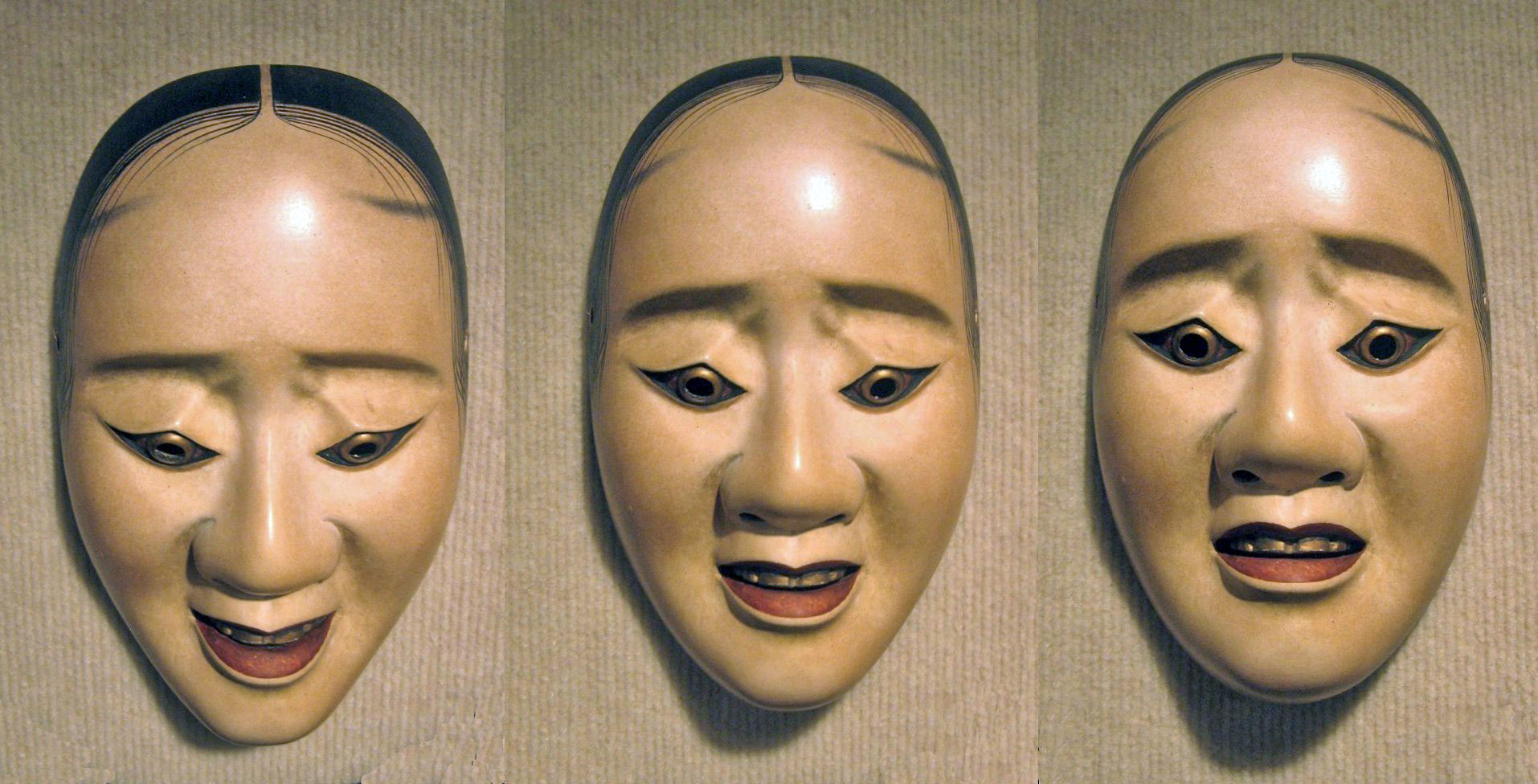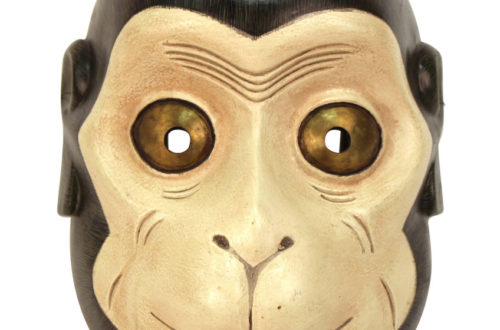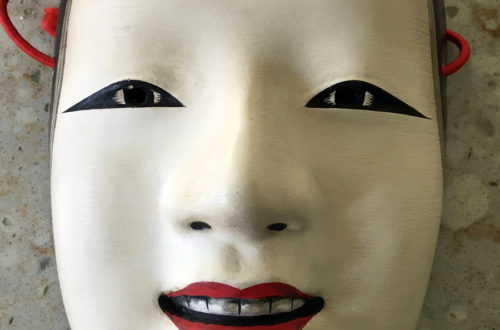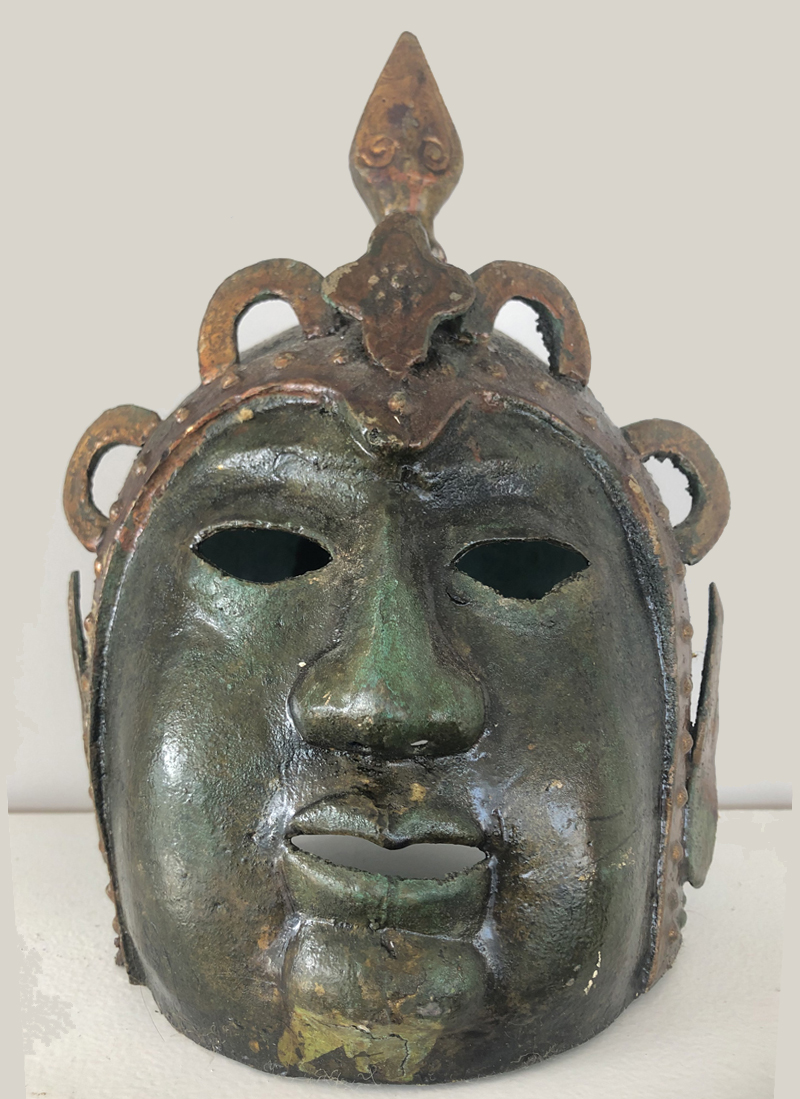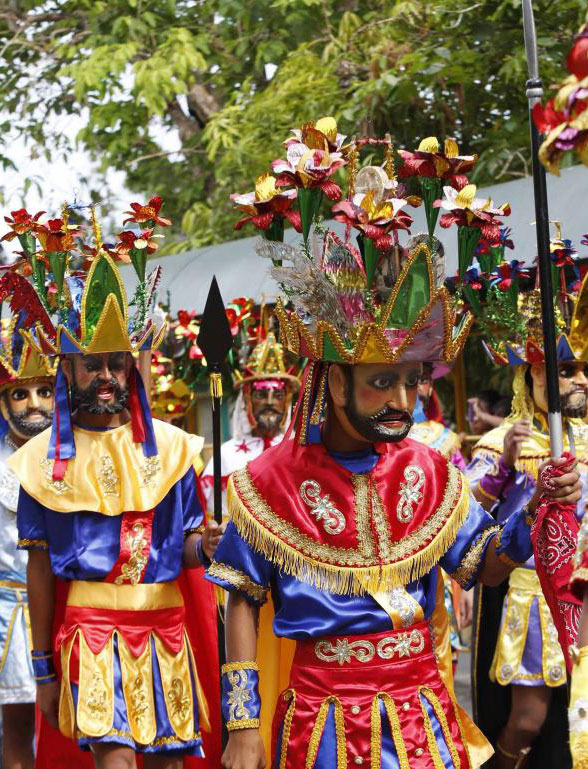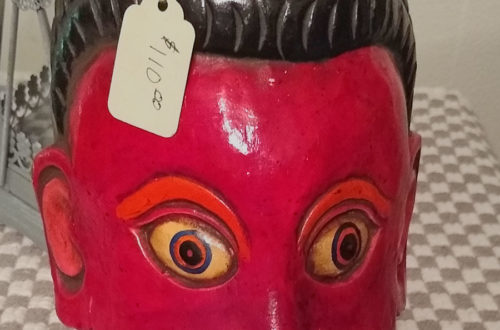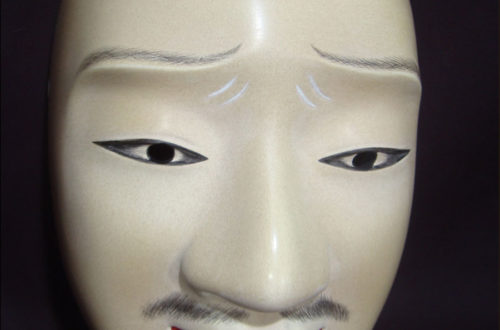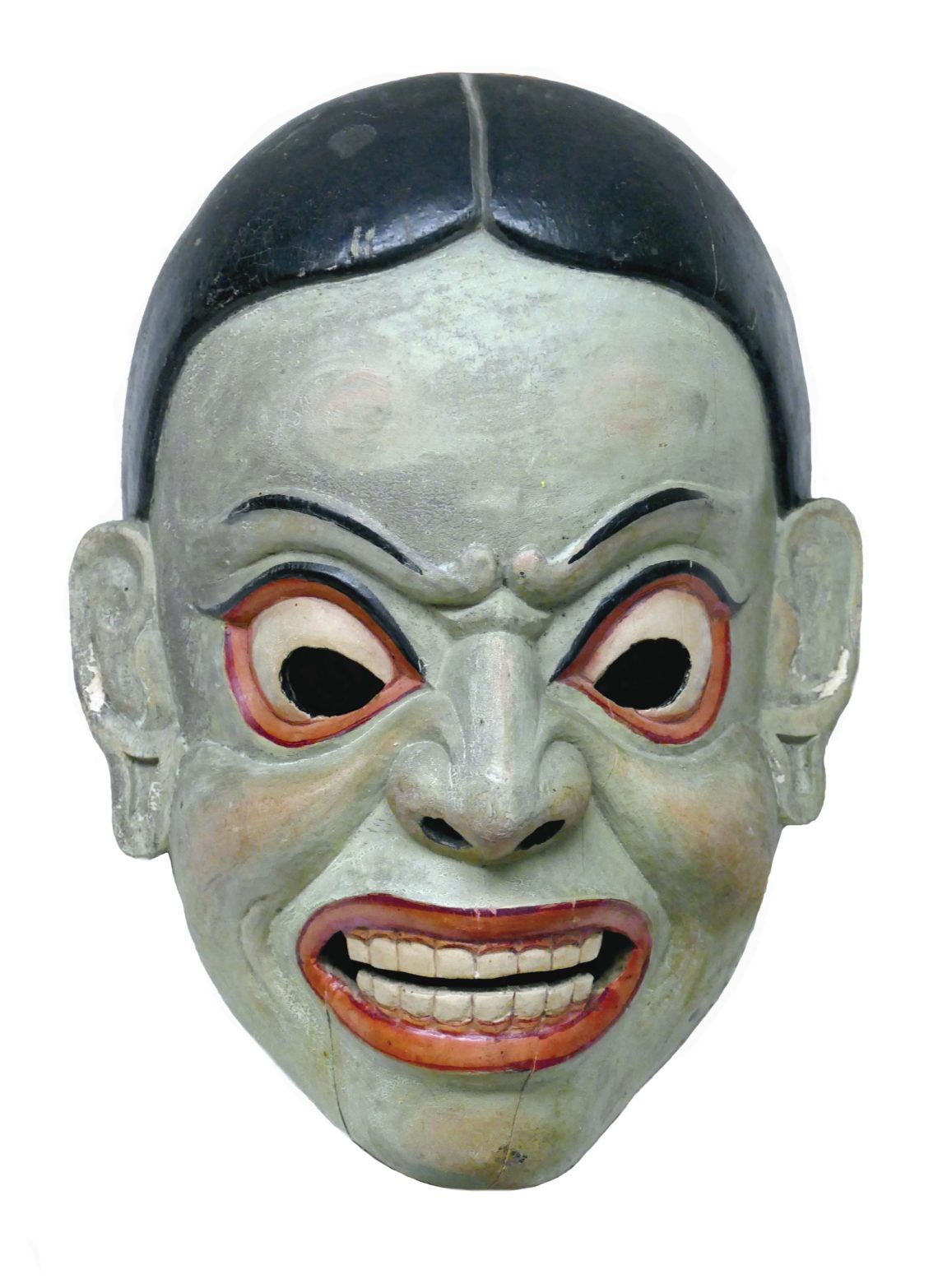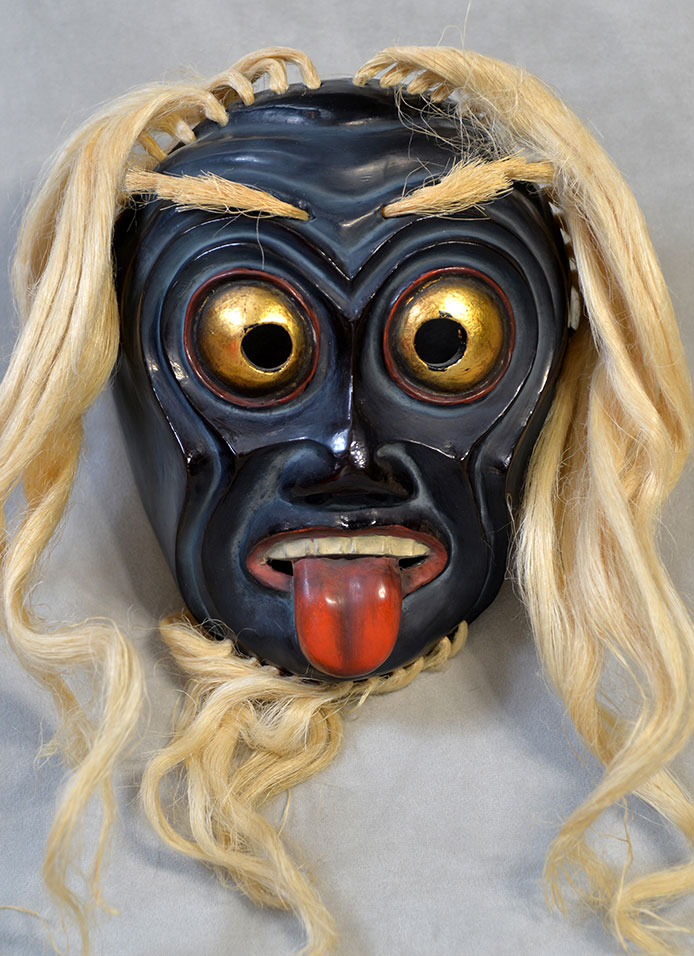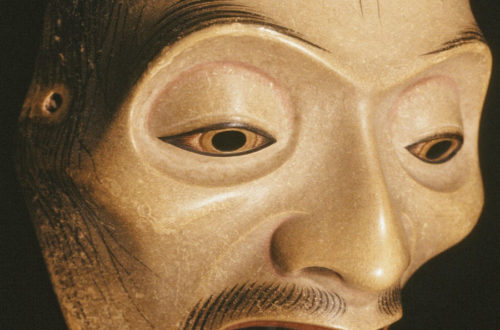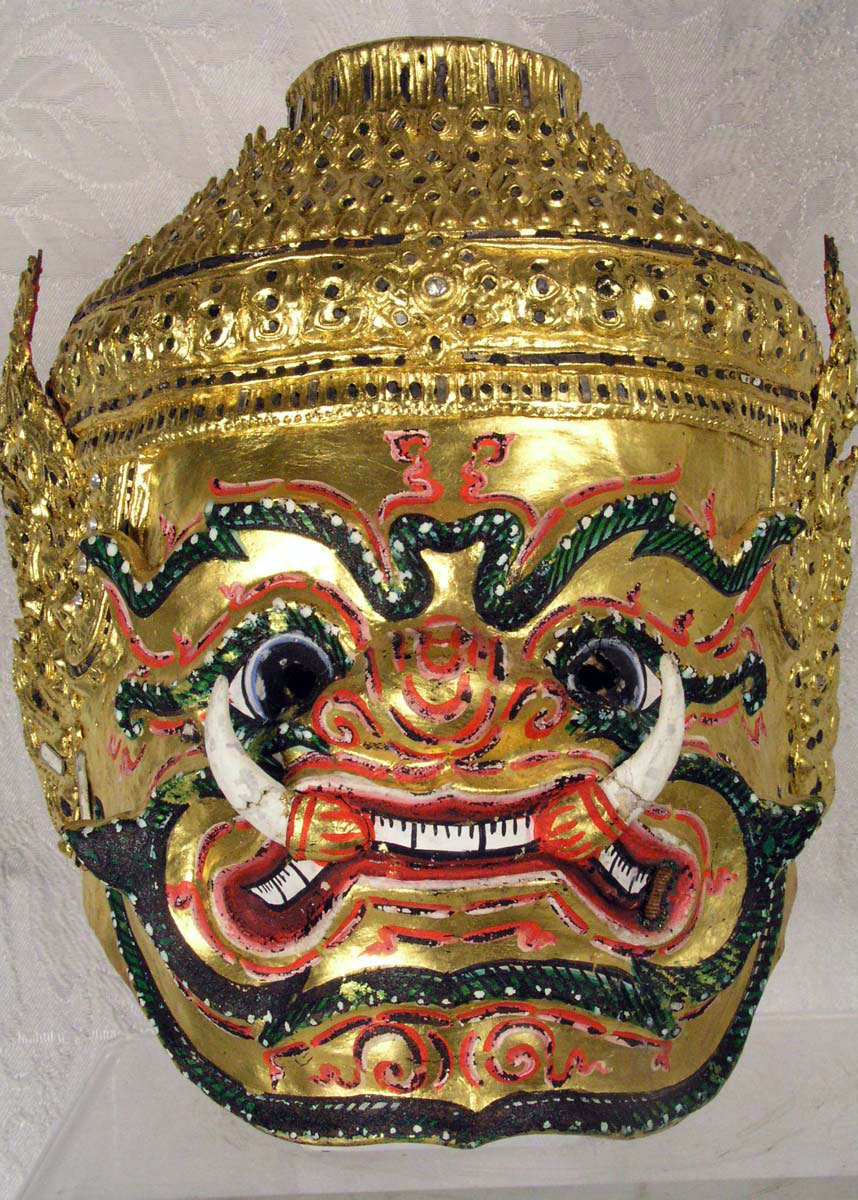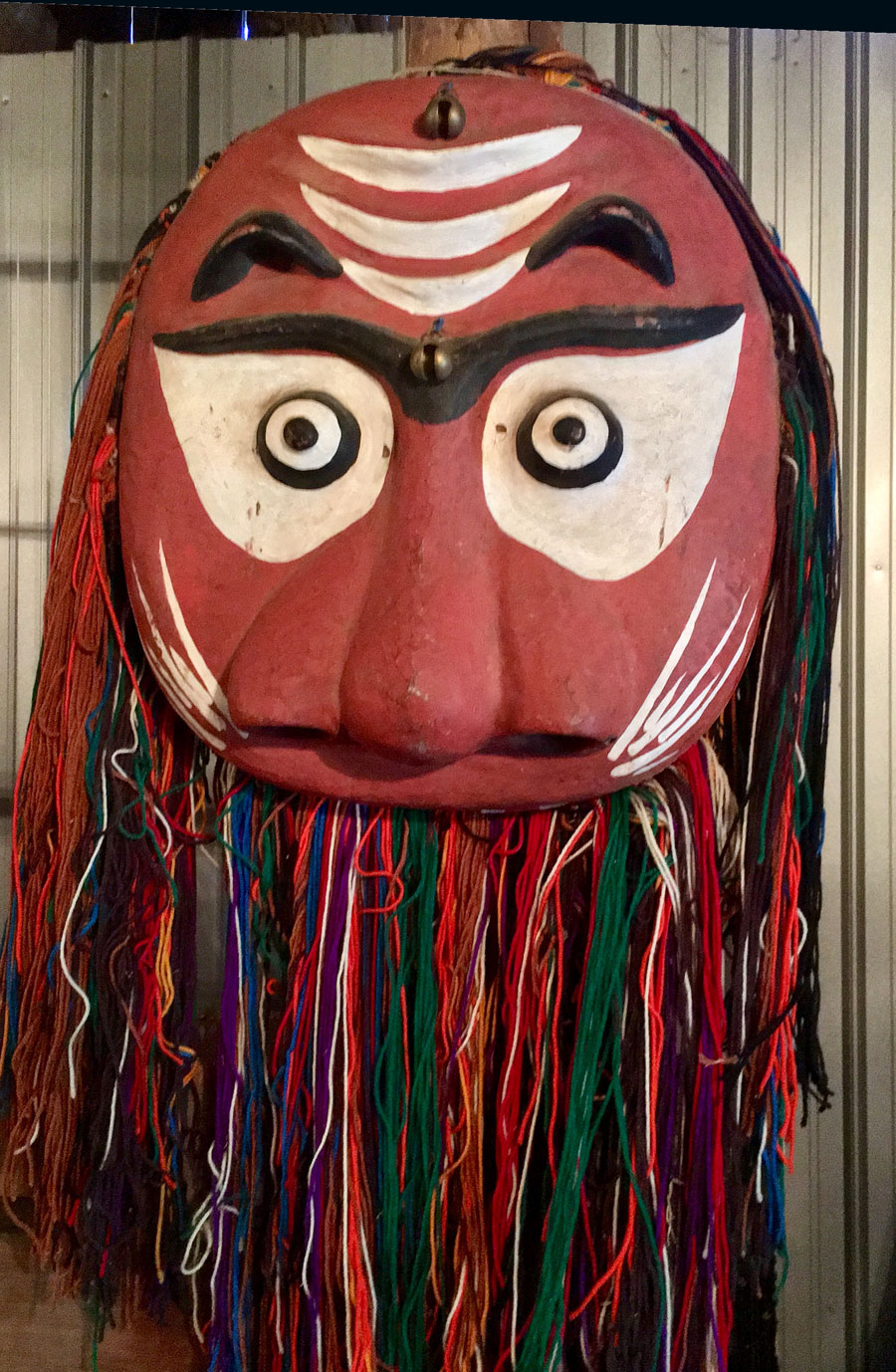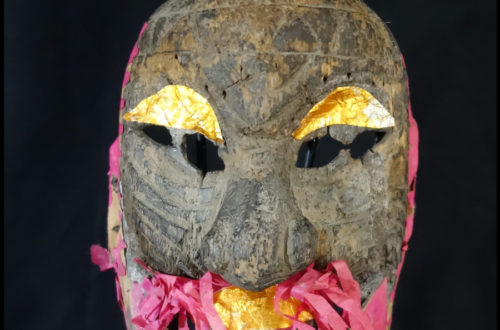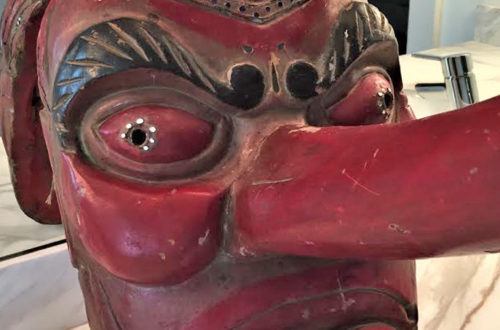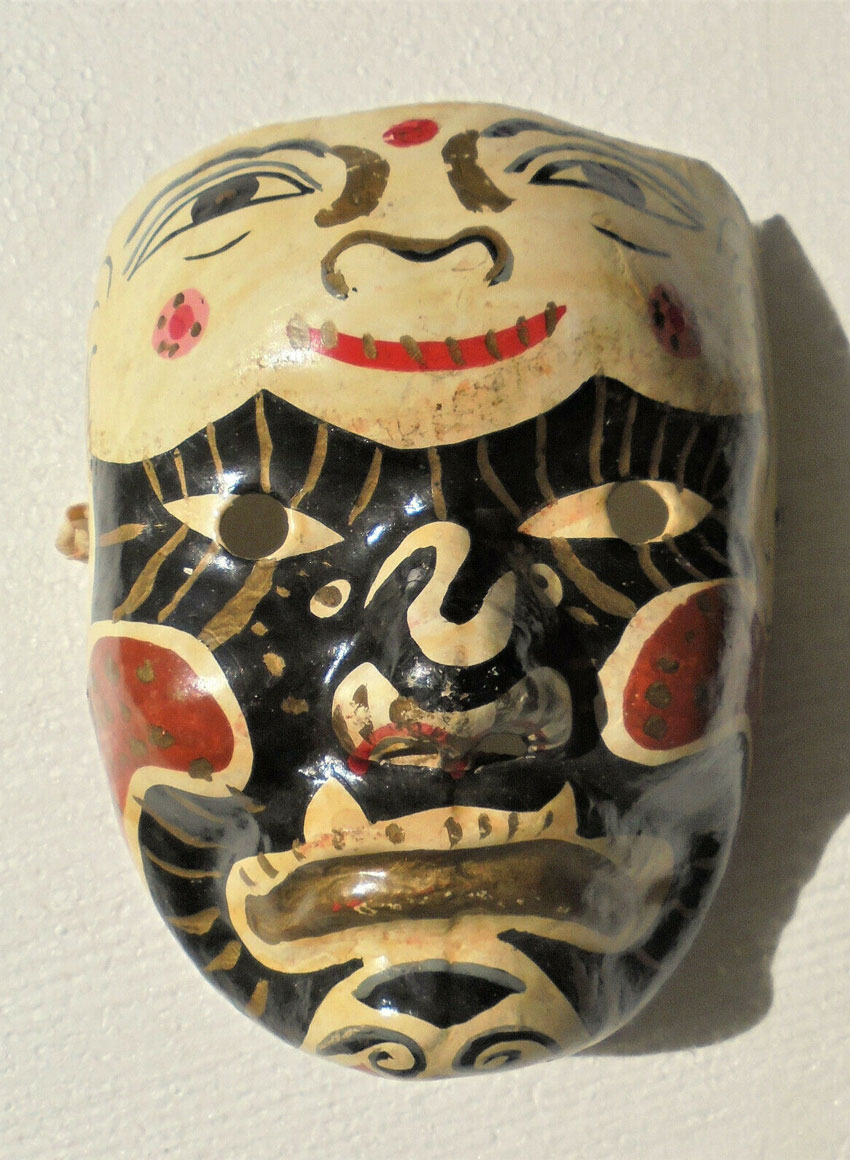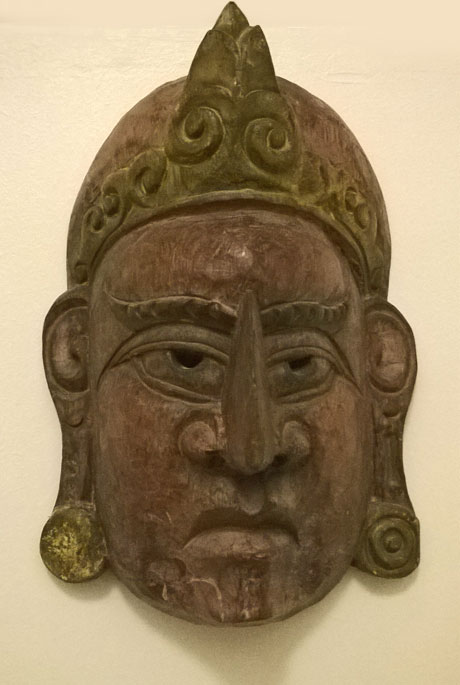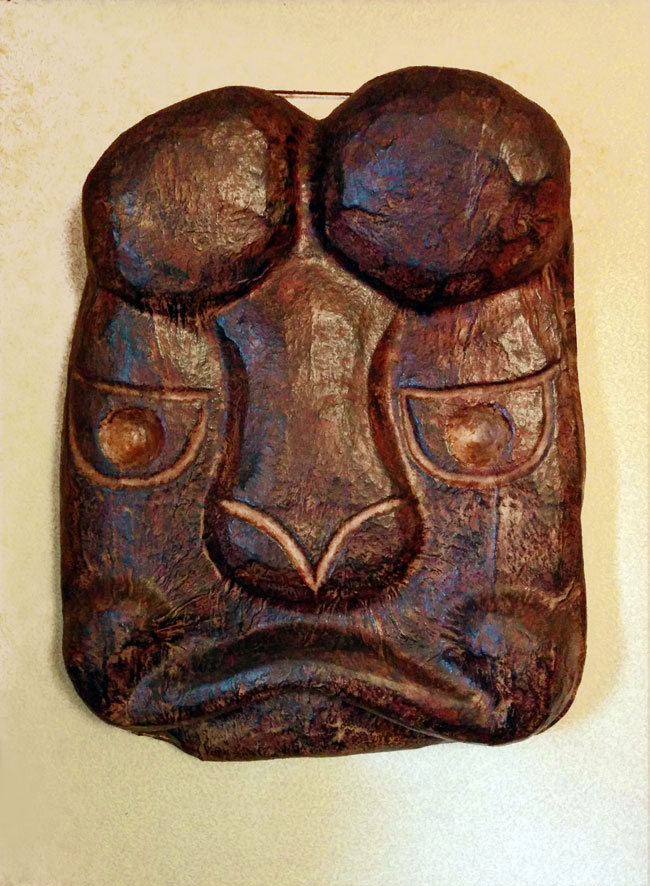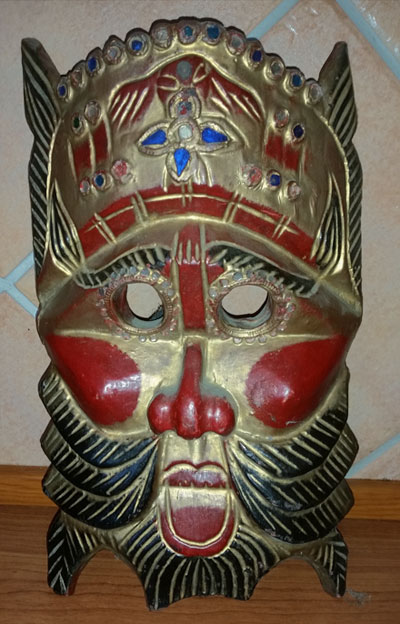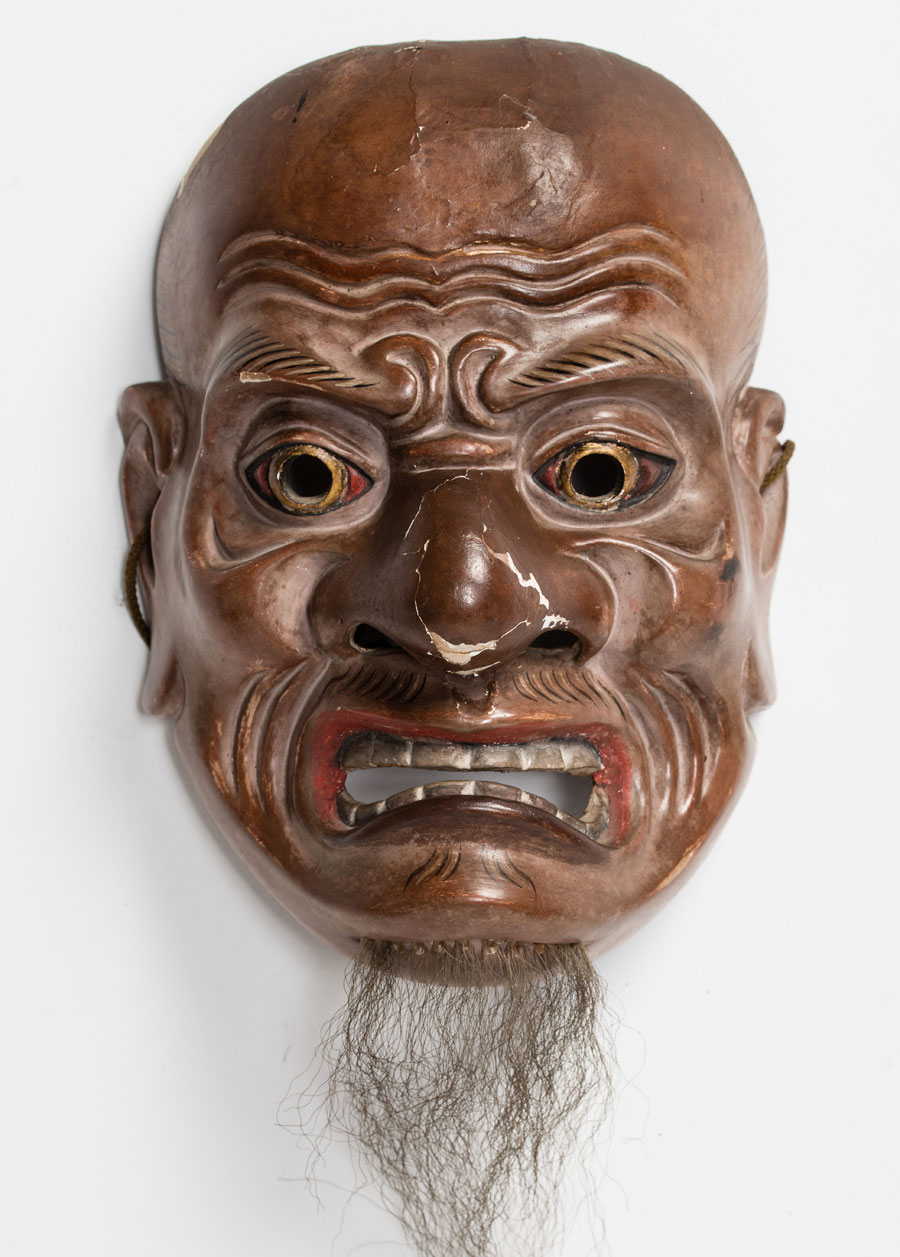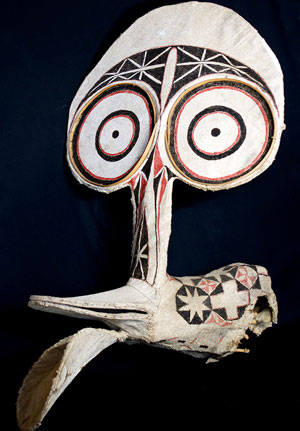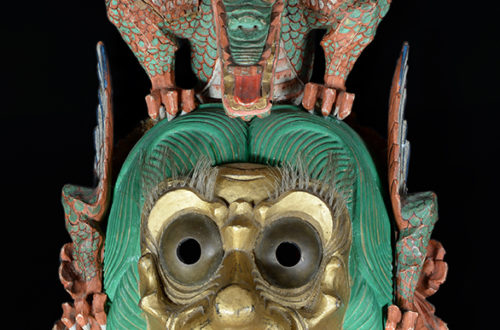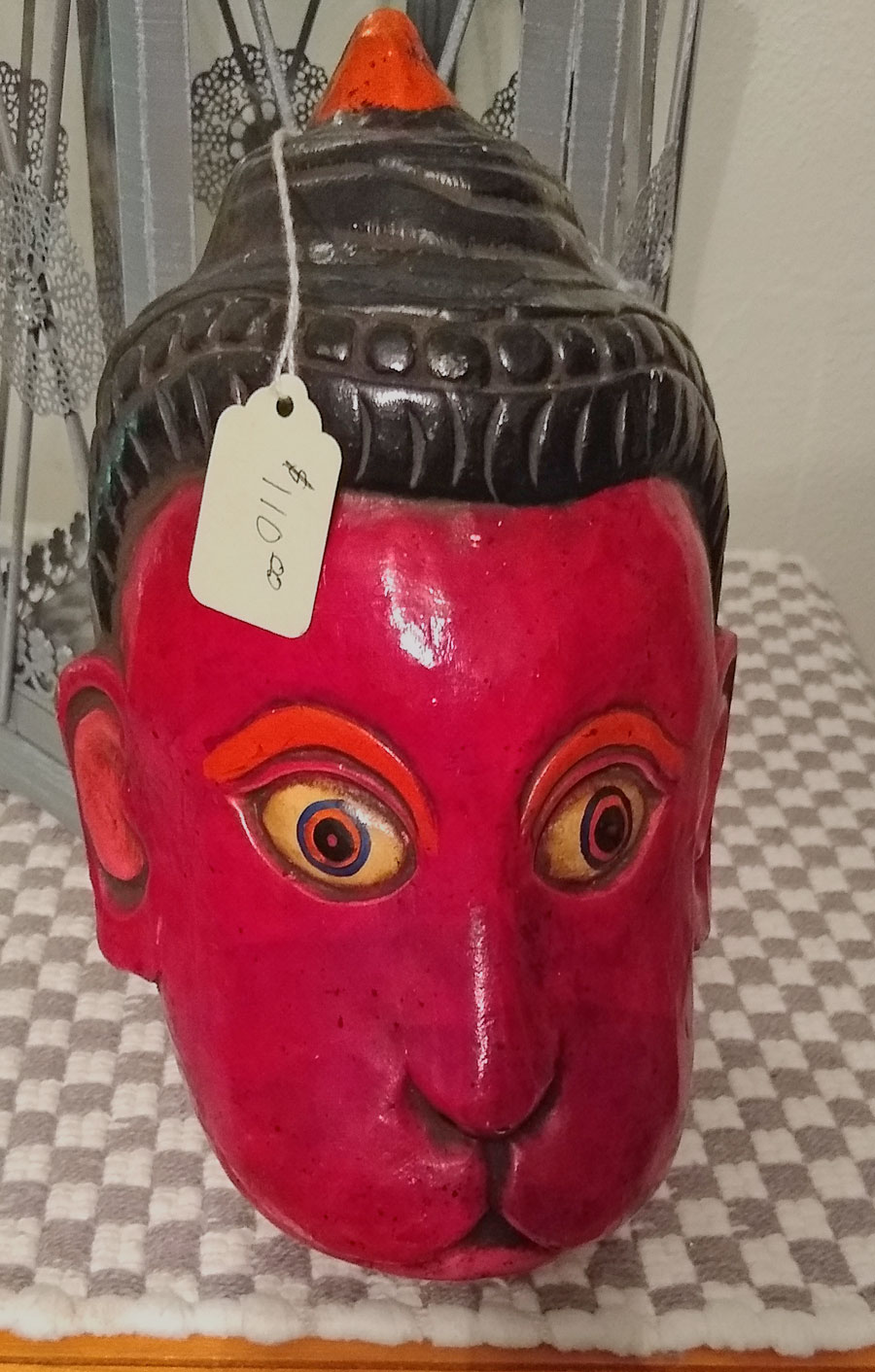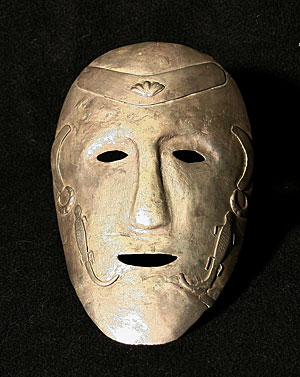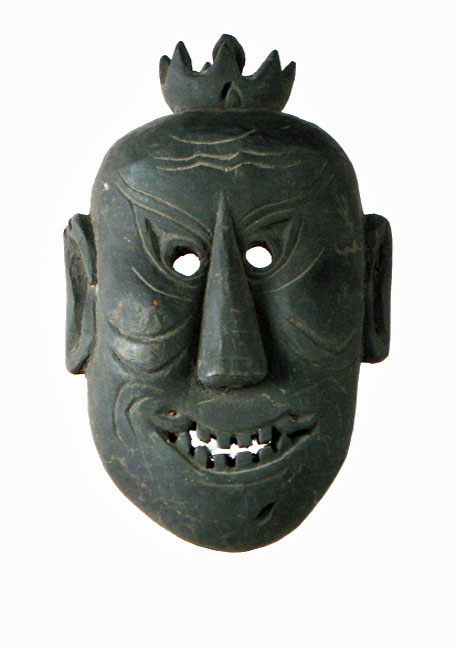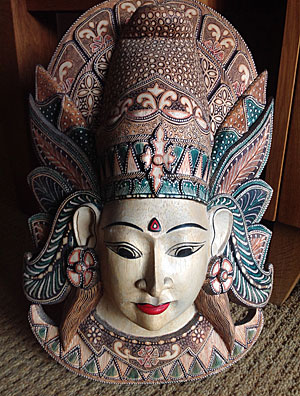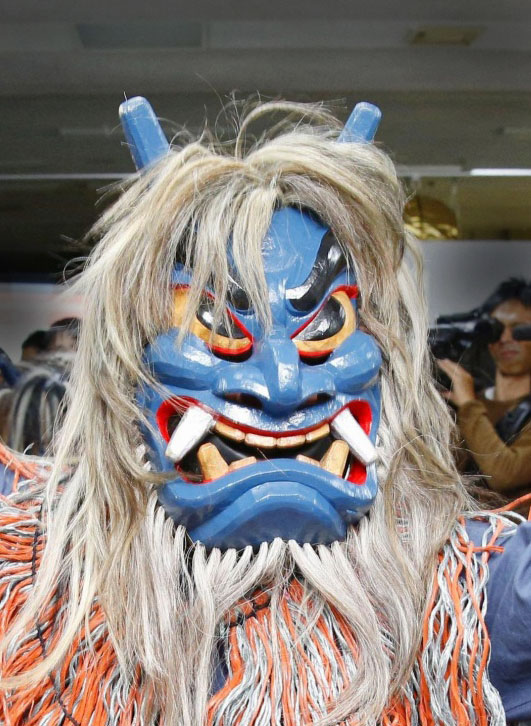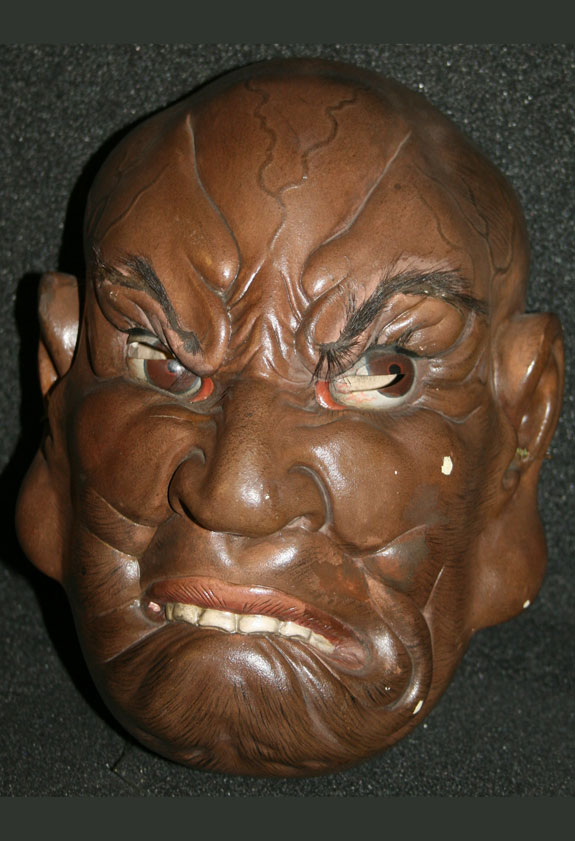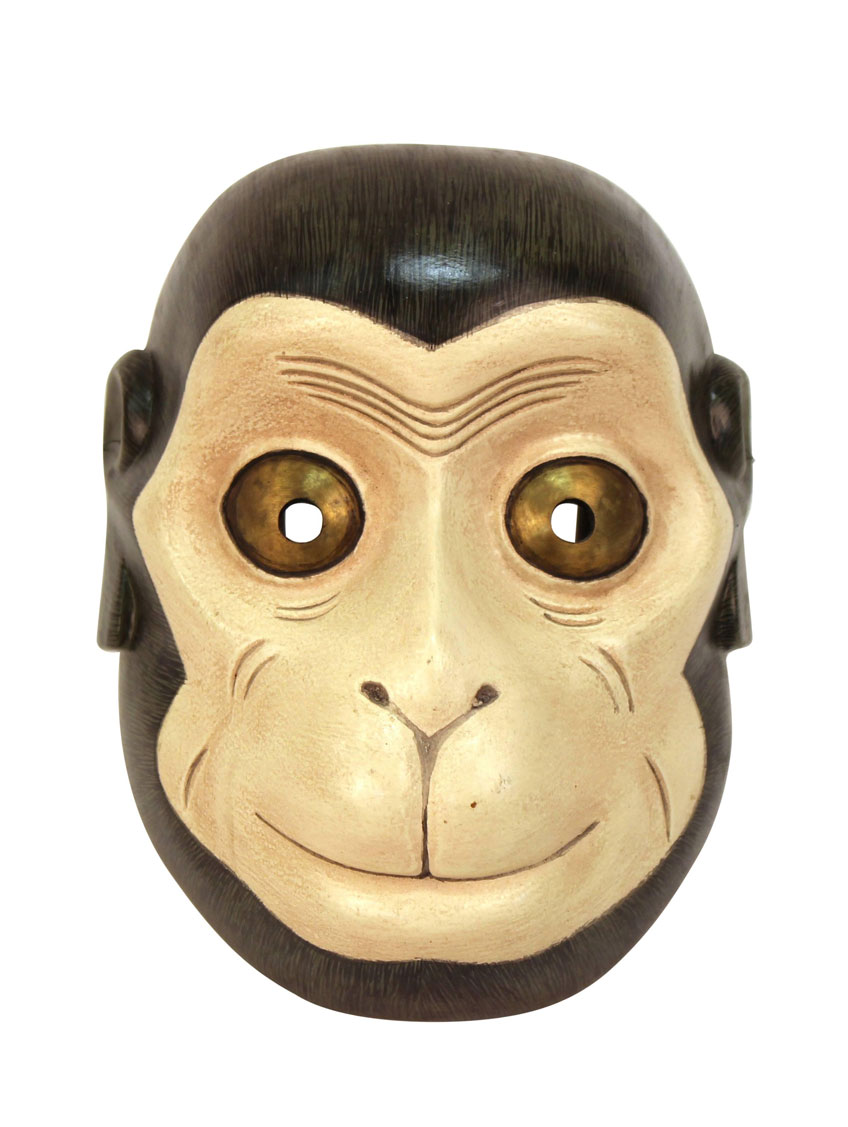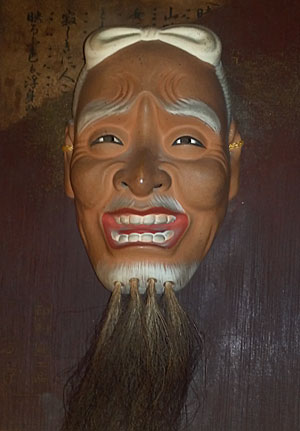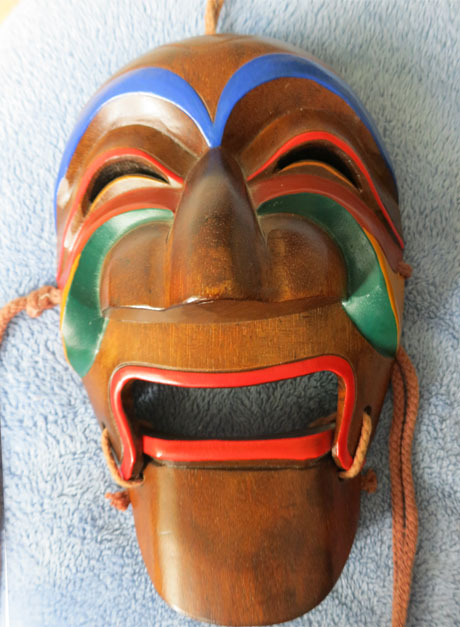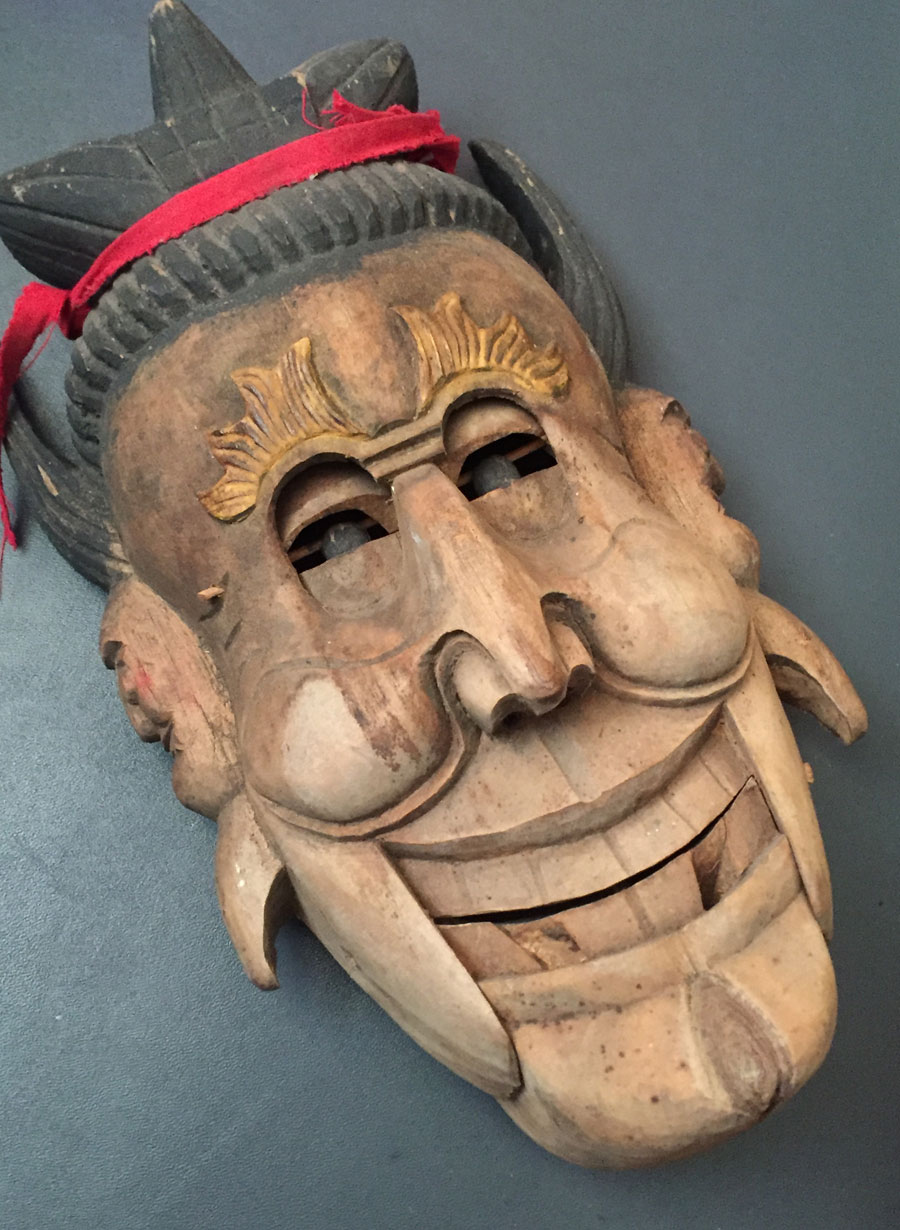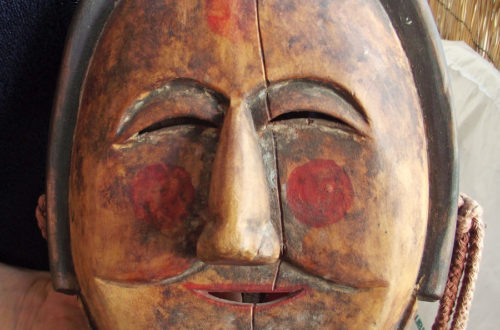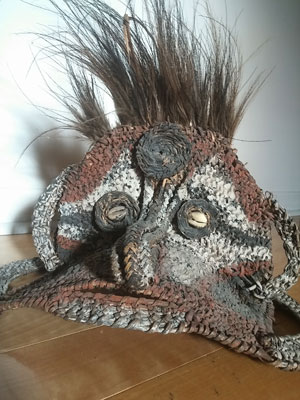Q: I’ve got a new mystery mask for you. I was in Japan all December, filming ceremonies and collecting masks for the Museum, and I came across this one in an antique store in Kyoto, which I absolutely do not recognize. This is not a tourist item, but I don’t recognize the type. The back gives the date (1985) and what appears to be someone’s name, or possibly the name of a workshop, but the kanji is unclear. Do any of your visitors have expertise in Japanese folk traditions? Aaron,1655 A: My guess is Bugaku. These kind of masks can go back 800 years. I’ve heard a few of them…
-
-
Old Chinese bronze helmet mask
Q: This was a gift. I am curious about it’s value. (later) I finally got in touch with the collector who gifted me the mask. He lived in China for a few years over 30 years ago as an employee of the Cuban government. This is where he purchased the helmet. I did a little more research and found an antique dealer on Etsy who recently sold an almost identical helmet to Kentuckyana Jones in July of this year. Shelly, 1639 A: Both masks are about 10.5 inches in height. The ornament on top is 3 inches. The circumference at the nose is roughly 24 inches. As you can see,…
-
Traditional Buddhist mask from Mongolia
Q: Slightly Mysterious… I recently purchased this mask at an online auction for approx $30. Not sure of origin since it was simply described as an “Asian Mask”. I don’t believe it was ever worn, but it’s very well made and certainly could have been . It measures 11″ X 9″ and carved from a lightweight wood. I’m guessing it’s from Bhutan or Nepal, based on the way the ears are carved and the exaggerated expression, but I could be wrong. Dan, 1622 A: I think of traditional Buddhist masks as being Himalayan, but they are also found as far north as Mongolia for use in the famous Tsam ceremony…
-
Huge Korean lion mask
Q: I have a pair of large masks that I purchased from an antiques dealer several years ago. He collected a lot of strange/interesting things and I really liked these masks a lot. Both are almost identical with very subtle differences. They seem to be made of a paper mâché mix with possibly a fiberglass tape…not sure. The sizes are 22 inches wide by 24 inches high. I purchased a massive lot from him so there wasn’t an individual price. Both of them have two metal handles placed on each side (obviously to hold), and also a painted swing bar in a half moon shape that swings up and rests…
-
Chinese opera mask
Q: This time I sent you a mask of the Beijing theater. I suppose it may be original because on the back, under the nostrils, I saw a stain that could be caused by the breath. I hope I got it right this time. Monica, 1572 A: You are right. Peking and Beijing opera, are the most dominant form of Chinese opera which combines music, vocal performance, mime, dance and acrobatics. These are performed all over the country. The number of these masks being made is huge. Papier mache opera mask are probably the favorite method performers use as makeup. Since such opera masks are used in representing various human…
-
Angry old Japanese man
This is an authentic Noh theater mask. Though I can tell this character is an angry old man, I don’t know his name. Nor do I know the name of the play, or when it was made and by what carver. Real Noh masks are very well carved and usually have a lot of personality. When I saw this one I could not resist sharing it with my viewers. If you know more about it, please comment.
-
Chinese Nuo mask from Hunan
Q: I don’t know a lot about the mask.. I’m a care giver and when I was first starting out about 8 years ago we had a lady that was there due to cancer.. she was a traveling artist and bought a mask from every place she traveled..when she past away our boss said she wanted everyone to choose a mask from her wall..for some reason this mask always caught my eye and when I saw no one was choosing it I knew i wanted it and was so happy it was still there..now I’m just wondering more about it. Melissa, 1546 A: Serious collectors of masks should skip this.…
-
Japanese Namahage mask
These are widely used in many parts of Japan on New Years Day, making them one of the most popular masks you can buy. They are quickly carved and reasonably priced so everyone can afford them. But you won’t often see them in books, museums or important collections because they’re for the common people. That may change. This terrifying demon-like deity has just made the United Nations’ Intangible Cultural Heritage list. During the holiday, wearing ogre masks and wielding huge knives, Namahage go from house to house shouting “are there are any crying or badly behaving children?” Invariably, the answer is yes and often the tears start before they even…
-
Japanese Noh theater monkey mask
This famous monkey mask, often called Saru from the Noh theater, was made during the Showa period between 1926-1989. Even though it looks brand new, it’s probably 50 years old. The following maybe more than you want to know… A collective name for Noh and kyōgen used until the start of the Meiji era. Sarugaku derives from sangaku, which came to Japan from the Tang Dynasty during the Nara era and was combined with ancient Japanese comedies. Sarugaku flourished during the Heian and Kamakura eras, and was at the time strongly comedic and broad based, including skits, acrobatics and magic. In the middle of the Kamakura era Sarugaku split into…
-
Exorcising mask from Guizhou, PRC
Q: I’ve long been interested in the nature, age and quality of this Chinese carved wooden face mask with articulating eye openings and movable jaw. It’s about life size 29 x 17cm. Thanks for your consideration. Arthur, 1514 A: Thank you for waiting so long for my reply. Your mask has a very interesting look to it with the two heads on the side, its eyes and jaw, and lack of paint. Probably authentic in the sense that tourists and exporters would want nothing to do with it. Can’t find anything similar in my research. Guizhou Province is a guess. China is the largest and one of the oldest countries…

